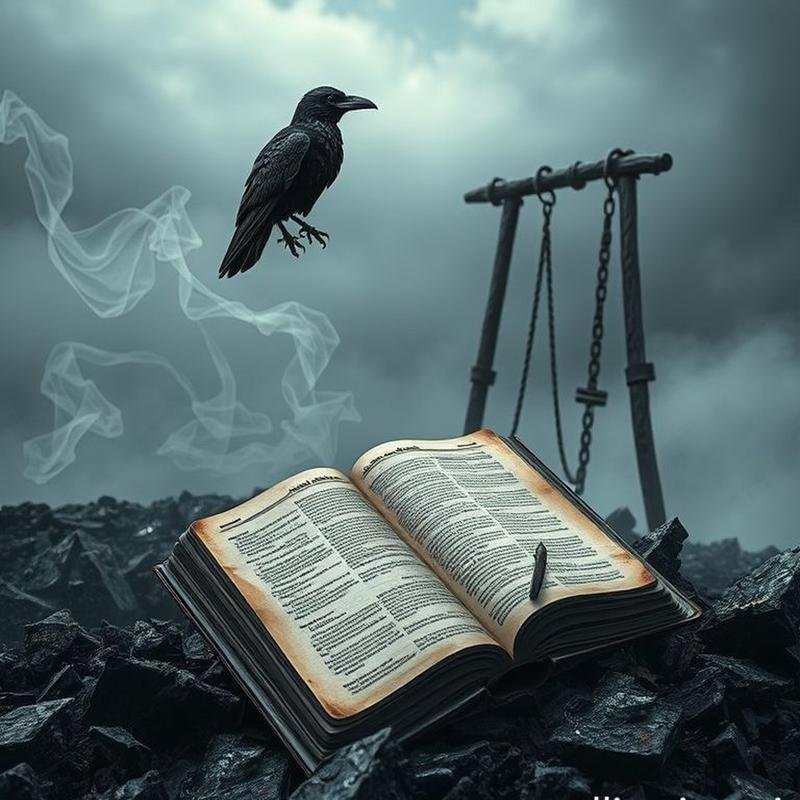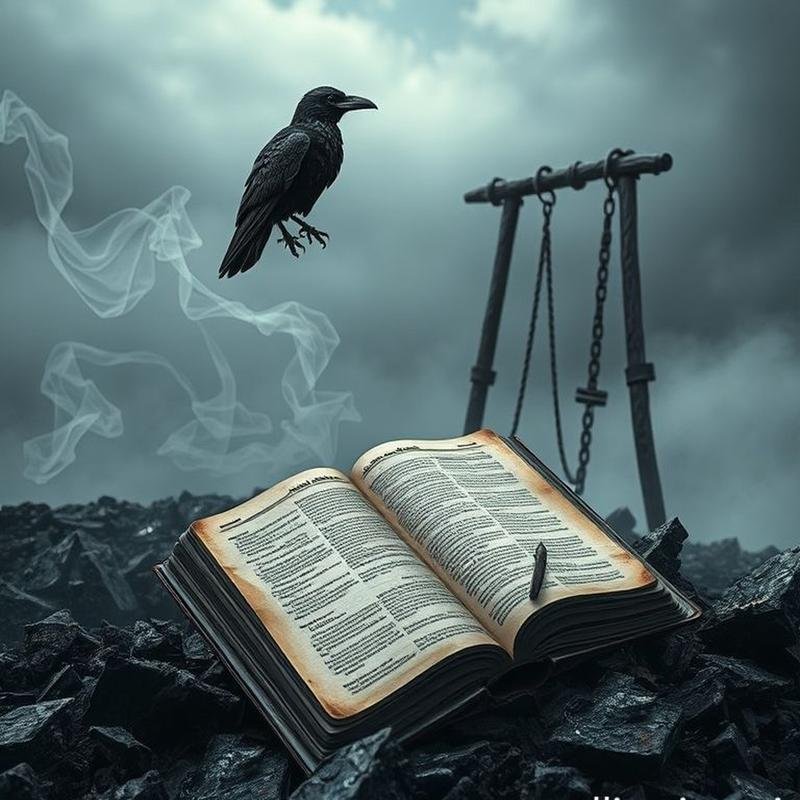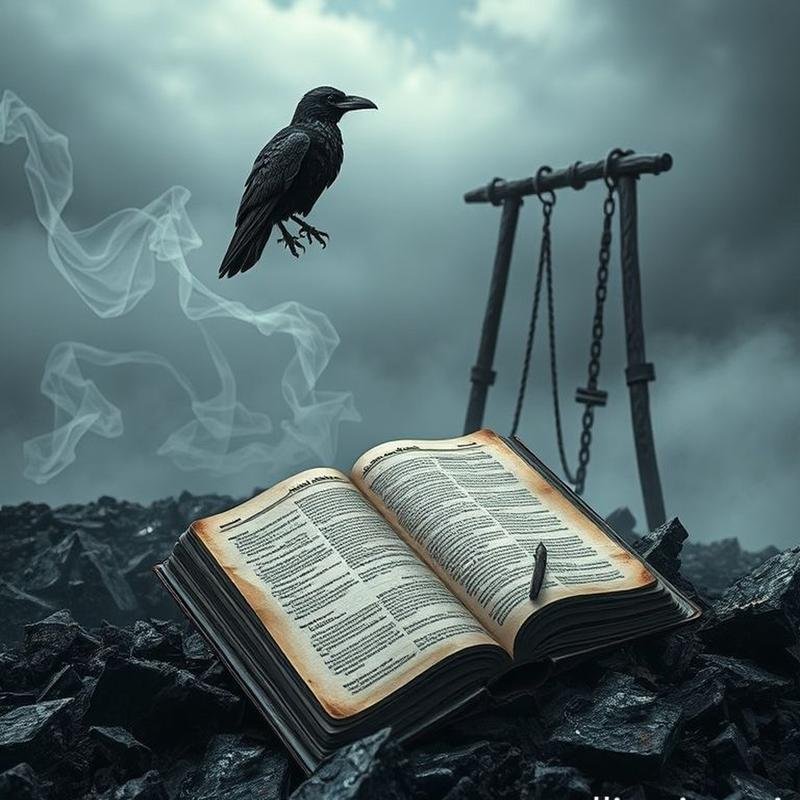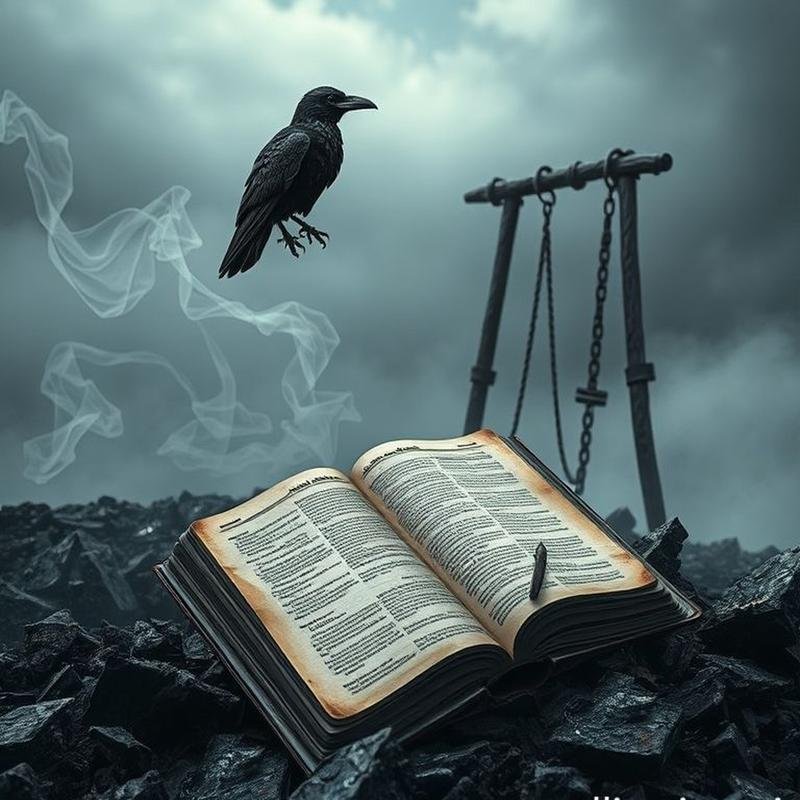“Accidental Adultery?: The Controversial Bible That Shocked the World”

“Accidental Adultery?: The Bible That Sparked Global Controversy”
Before we explore the details of this scandal, share your predictions about who was responsible for this error. And subscribe to our documentary channel to join us on a journey to uncover the secrets of this story.
Imagine the resounding shock in London in 1631. The printing presses roared, disseminating the word of God, but amidst this sacred clamor, a grave error crept in, one that would resonate through time. Thus, the “Wicked Bible,” or the “Adulterous Bible” as it would later be known, was born, tainted by a typographical sin.
Imagine the impact of that moment on a devout believer, opening the Bible with a reverent heart to reach the Seventh Commandment, only to be startled! Instead of “Thou shalt not commit adultery,” the words “Commit adultery” stared back! The sacred commandment prohibiting infidelity was transformed, in a diabolical twist, into an explicit invitation to it!
A thousand copies of this ill-fated book were released into the world before the error was discovered, a thousand sparks igniting a raging scandal. King Charles I, incensed, imposed a substantial fine on the printers, Robert Barker and Martin Lucas: three hundred pounds sterling, a vast sum sufficient to silence dissent and stifle consciences in that era.
However, financial penalties alone were insufficient to quell the public outrage. Most of the offending copies were collected and destroyed in a desperate attempt to suppress the sedition, but the few that survived the purge became silent, enduring witnesses to the capricious power of error and its astonishing ability to disrupt the sacred.
Barker and Lucas, names etched in the annals of history, not in ink of pride, but in the dark ink of scandal. As royal printers, they were expected to uphold the word of God, but they became symbols of negligence, or perhaps deliberate sabotage. Three hundred pounds sterling, a considerable sum at the time, represented a harsh penalty for misjudgment, or a smokescreen concealing a malicious conspiracy?
Was the error merely a typographical oversight, or were there ulterior motives that inserted that fateful word into the heart of the sacred text? Whispers circulated about spiteful rivals, eager to displace Barker and Lucas from their prestigious positions. Does negligence alone explain the magnitude of the incident? Bonham Norton and John Bill, the editors who were blamed, were they merely scapegoats in a much larger scheme?
The fines were not the end of the matter. Recalling the printed copies became an urgent necessity, but the question that echoes across the centuries remains: why did no one face execution? In an era when heresy was a capital crime, Barker and Lucas miraculously escaped capital punishment. Why? Did higher authorities intervene to protect them, or was the scandal too profound to be resolved by death sentences? Today, only approximately twenty copies of the “Wicked Bible” remain, rare artifacts reminding us of the power of the printed word and its immense capacity to incite sedition and alter the course of history.
The fine was not the conclusion, but the catalyst that ignited public anger. As soon as the news broke, all of England was in an uproar. Imagine the shock, the astonishment tinged with horror, and then the overwhelming anger that swept through the populace. “Commit adultery” printed in bold letters in the heart of the Bible! It was not merely a typographical error, but a desecration of the sacred, a blatant assault on everything that was considered holy.
Rumors spread rapidly, contaminating every thought. Was it a premeditated act? Were these treacherous printers seeking to undermine public morals and disseminate insidious corruption in secret? Robert Barker and Martin Lucas, the printers responsible, quickly became reviled figures, cursed, and accused of high treason and blasphemy.
The anger was not limited to the common people, but extended into the highest echelons of power. King Charles I himself was disgusted by this heinous act and issued a strict royal decree to obliterate every copy of this “Wicked Bible.” However, as is often the case, a handful of copies escaped destruction, becoming a repulsive reminder of that resounding scandal.
These few remaining copies have now become ominous treasures, reminding us of the power of the word. But was the matter truly resolved at that point? Was it just a typographical error, a slip of the tongue in the realm of words? Or is the story far more complex? Amidst the turmoil stirred up by the scandal, tones of doubt gradually arose, eventually transforming into resounding calls demanding the revelation of the truth.
How could a single mark, a solitary letter, turn the tables upside down and radically alter the meaning? “Thou shalt not commit adultery” was transformed into “Commit adultery,” the sacred commandment was transformed into an explicit invitation to sin. This error was not just a passing glitch, but was like the spark that ignited questions about the essence of religious authority.
Are sacred texts infallible? And can the interpretations of clergymen be trusted, as long as even the Bible itself is subject to human error? Those rare remaining copies of the controversial Bible were not just artifacts, but were a constant reminder of human fallibility and susceptibility to error, even in the most sacred matters. The scandal revealed the fragility of religious authority and raised profound questions about the interpretation of divine commandments.
In the wake of the resounding scandal, King Charles I issued a decisive royal decree to withdraw and destroy every copy of the “Wicked Bible.” A widespread campaign was launched, but the question that arises is: did it truly succeed in erasing this egregious error from existence?
The evidence suggests otherwise. While the majority of the printed copies were destroyed, a small handful managed to escape destruction, and today have become rare archaeological treasures. The number of remaining copies is estimated to be between twenty and thirty only, scattered among collectors, prestigious libraries, and museums that preserve them as a living testament to human fallibility and susceptibility to error.
But what exactly gives these copies such significance? It is not limited to their rarity, but extends to their unique historical and cultural value. They embody a pivotal moment in the history of printing, and a moment that revealed the fragility of religious authority and raised profound questions about the interpretation of divine commandments. At auctions, the value of a single copy may exceed $10,000, not for its content, but for the story of the typographical error that altered the course of history and transformed a sacred commandment into an explicit invitation to sin.
But what legacy did this minor typographical error leave behind? It is like a permanent scar on the printing industry, constantly reminding it of the need for vigilance and attention to detail. In the wake of the resounding scandal that shook the country in 1631, King Charles I did not hesitate to impose a substantial fine on the printers, Robert Barker and Martin Lucas, amounting to 300 pounds sterling, a considerable sum at the time, reflecting the extent of royal displeasure and widespread public anger.
This incident was not just a financial penalty, but a resounding wake-up call. Nearly a thousand copies of the “Wicked Bible” were swiftly withdrawn from circulation, to be destroyed immediately, in a desperate attempt to extinguish the raging fire of sedition. However, as is often the case, things do not always go as planned, and this attempt turned the few remaining copies into priceless treasures, coveted by collectors of rare artifacts, who pay dearly for them without hesitation.
The impact of the “Wicked Bible” did not stop there, but extended to the very core of the printing process itself. After this egregious scandal, proofreading became more rigorous and meticulous, and proofreaders with extensive experience and greater responsibility were appointed, often trusted clergymen or scholars versed in the sciences of language, to ensure that this egregious and unforgivable error was not repeated. This story has become a cautionary tale told in the printing industry, generation after generation, to remind everyone of the importance of accuracy and dedication to work, as one wrong word can have dire and unpredictable consequences.
But behind the rigid letters of print lies a more fragile truth: the truth of humanity. The “Wicked Bible,” with all its resounding scandal, reminds us poignantly that religious texts, however sacred, are ultimately the product of human minds. Humans who err, who are distracted in the midst of transmission, and perhaps even manipulate intentionally or unintentionally. Imagine the overwhelming shock that swept through the hearts of believers when they discovered that one word, just a small “not,” had been omitted by mistake, turning the sacred commandment into an explicit and frightening invitation to adultery.
This was not just a passing typographical error, but a violent earthquake that shook the foundations of the established trust in the authority of the church and religious texts. Suddenly, people found themselves facing a haunting existential question: if the Bible, which is supposed to be the absolute word of God, is subject to egregious human error, then what can be trusted? This tragic error led to heated and profound discussions about the crucial role of humans in interpreting religious texts, and whether we should accept them blindly and without thinking, or whether we have the right, even the duty, to think critically and analyze objectively? The “Wicked Bible” was not just a resounding scandal, but a call to critical thinking.
It was not just a passing error, but the spark that ignited a journey through time.








